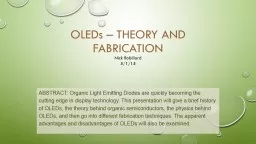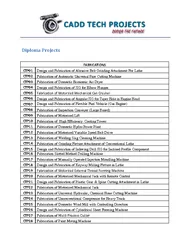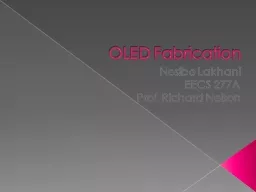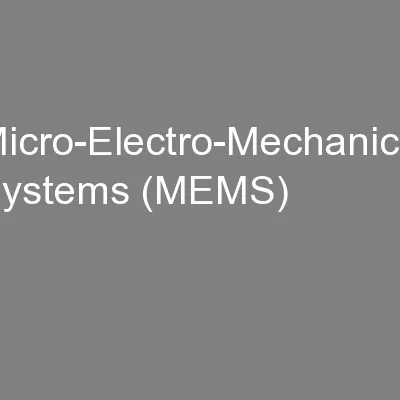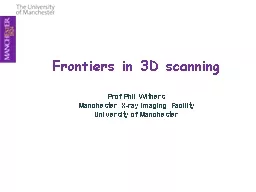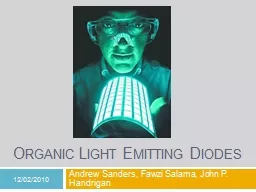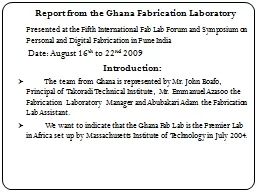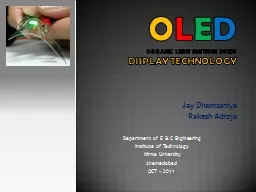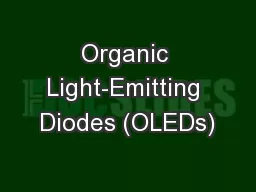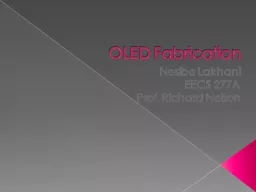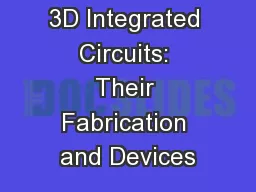PPT-OLEDs – THEORY AND FABRICATION
Author : natalia-silvester | Published Date : 2017-04-20
ABSTRACT Organic Light Emitting Diodes are quickly becoming the cutting edge in display technology This presentation will give a brief history of OLEDs the theory
Presentation Embed Code
Download Presentation
Download Presentation The PPT/PDF document "OLEDs – THEORY AND FABRICATION" is the property of its rightful owner. Permission is granted to download and print the materials on this website for personal, non-commercial use only, and to display it on your personal computer provided you do not modify the materials and that you retain all copyright notices contained in the materials. By downloading content from our website, you accept the terms of this agreement.
OLEDs – THEORY AND FABRICATION: Transcript
Download Rules Of Document
"OLEDs – THEORY AND FABRICATION"The content belongs to its owner. You may download and print it for personal use, without modification, and keep all copyright notices. By downloading, you agree to these terms.
Related Documents

